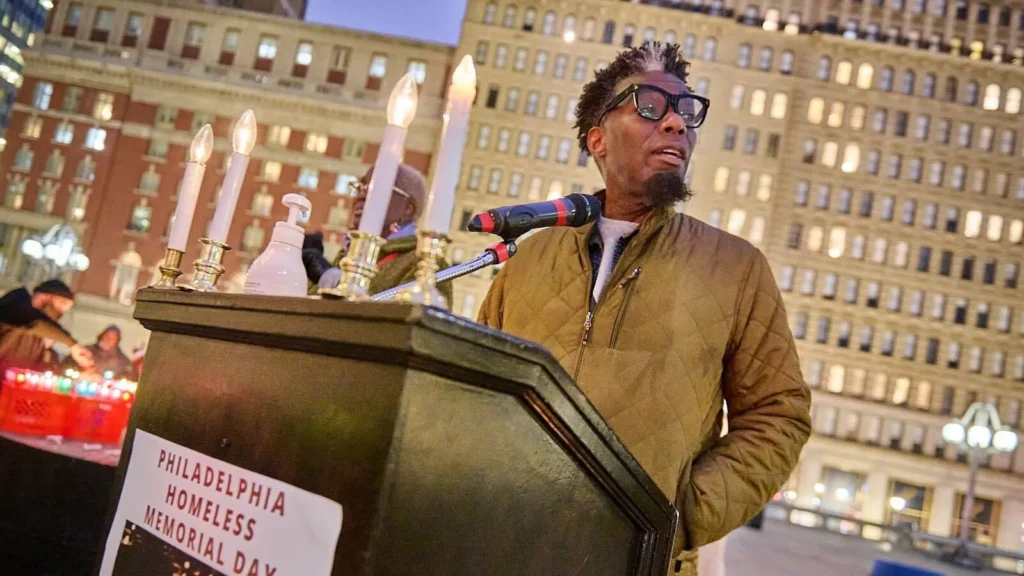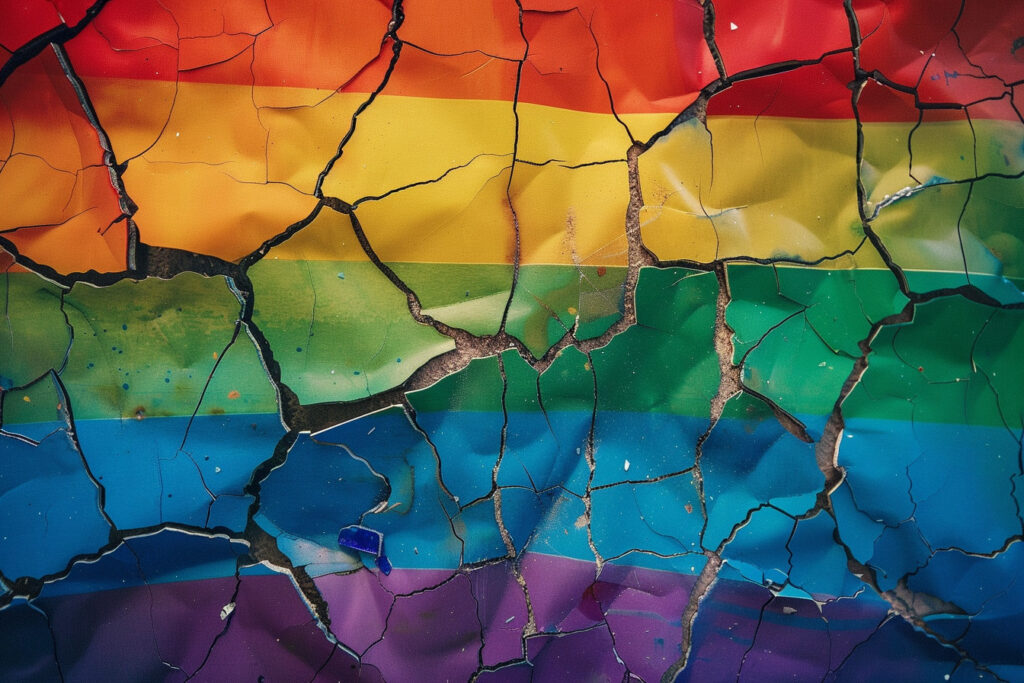There’s so much more to being gay than the bar scene, the gossip and brunch, yet so few gay people (and their allies), know how far their community has come. Even looking back at my grade school days, I remember spending two days total on the history of racial segregation and even less time on the subject of women’s suffrage. What I don’t remember is even a mention of the LGBT (now LGBTQ) movement, let alone any of the marches or picketing that took place 50 years ago. So when the opportunity to take a peek at a new exhibit at the Constitution Center, I arrived 10 minutes early. Trust me, for a gay man that’s amazing.
Did you know in certain places a man could be arrested and questioned about being gay for not wearing three gender appropriate articles of clothing? Just one of the things I learned among SO much more…
While I’ve got quite a few comments and quotes to share about the press event, I’m sure a majority of you are here to get an inside scoop at what the exhibit holds, so I’ll cover that first. As a whole, I found the exhibit to be bright, attention grabbing (and keeping), and very tangible. The collection of artifacts served their purpose. From the light hearted screen captures of Ellen DeGeneres, to the more gut wrenching tools used for early “Homo-cure” lobotomies. The exhibit team (Ellen M. Snyder-Grenier, Keith Ragone and Bob Skiba), created an exhibit with the 21st century museum attendee in mind. No article was wordy or overbearing, and no pieces of text felt cumbersome to read. But speaking of cumbersome, the next paragraph is going to get wordy, and is a play by play of the exhbit, so “spoilers!” Feel free to skip to the following paragraph, which is more about the press conference.
The floor plan (like most museum pieces), is set up appropriately in time-line fashion, starting in 1950, with “Being Gay in Mid-20th Century America: A Climate of Fear and Intimidation,” which includes media, personal stories, and law enforcement accounts. I was able to explore the extent of discrimination faced by LGBT people and learn about the risk of being visible. The exhibit journey continues with, “Frank Kameny, 1957: A Fired Government Employee Challenges the Status Quo,” tells the story of the Lavender Scare, a time when government employees believed to be homosexual could be fined at will, and of a rising astronomist who is fired and then fights back. The exhibit then hits 1960 when the right to speak out – guaranteed by the 1st Amendment – became a springboard in the LGBT movement for equality and is the subject of section three, “1960s Protest: Testing the Promise of the 1st Amendment.” This area explores the rising visibility and activism in the gay community during this tumultuous decade. As the gay rights movement emerged into public consciousness and the call for LGBT equality gained wider support, the debate over gay rights increasingly played out in the courts. In the following area, “Coming Out for Liberty: Amendments V, XIV, and the Response to the Court Case Bowers v. Hardwick,” I learned how a 1987 Supreme Court ruling helped fuel the change in focus for LGBT people, who would increasingly shed the cloak of invisibility to seek equality. We continued into a more current era with “A Debate Over Dignity: Amendment XIV,” addresses the timeframe after the Bowers v. Hardwick Supreme Court decision when LGBT people turned to their neighbors, employers, and communities. This section explored the ongoing debate over legal protections for LGBT individuals and families from the 1990s through today. The exhibition concludes by asking, “The End, The Beginning: What Does Equality Mean?” I got to look at current issues surrounding LGBT rights and the courts. Legalizing marriage of same-sex couples, which the Supreme Court will address in June 2015, is an entry point to larger debates over anti-discrimination laws and exemptions.
At the press event, prior to our tour, I was in awe to meet two of the original 40 people that marched on Philadelphia’s Independence Hall 50 years ago. Ada Bello and John James greeted the press with warm and genuine smiles. Both much more seasoned now, were proud to share their stories while touring the exhibit. Jeffery Rosen opened up the press conference by stating that this exhibit is unique, one of a kind, and a first for the country. He also proudly announced that The NCC has decided to extend the run of the exhibit to January 3rd! He then turned the microphone over to William Way’s own Chris Bartlett who explained that William Way has been working on this project for over 3 years in an effort to continue their commitment to expanding their mission reach. Bartlett went on to mention that the exhibit primarily built itself because each piece of history they found, led them to another more fascinating piece of the puzzle. Finally, Bartlett passed the torch, so to speak, to Helen “Nellie” L. Fizpatrick, Director, Mayor’s Office of LGBT Affairs. She spoke about Philadelphia as a whole, and how we, as a city, have had a perfect HRC score for 3 years now. She noted that Philly is honored to celebrate LGBT history, right here in it’s birthplace. Her final line struck me, “Everyone has a role in creating an equitable society.”
While the WILLIAM WAY LGBT COMMUNITY CENTER PRESENTS SPEAKING OUT FOR EQUALITY: THE CONSTITUTION, GAY RIGHTS, AND THE SUPREME COURT AT THE NATIONAL CONSTITUTION CENTER now runs until January, I’d advise you to visit soon. The best part? If you work in Center City you can swing by on your lunch break!

























